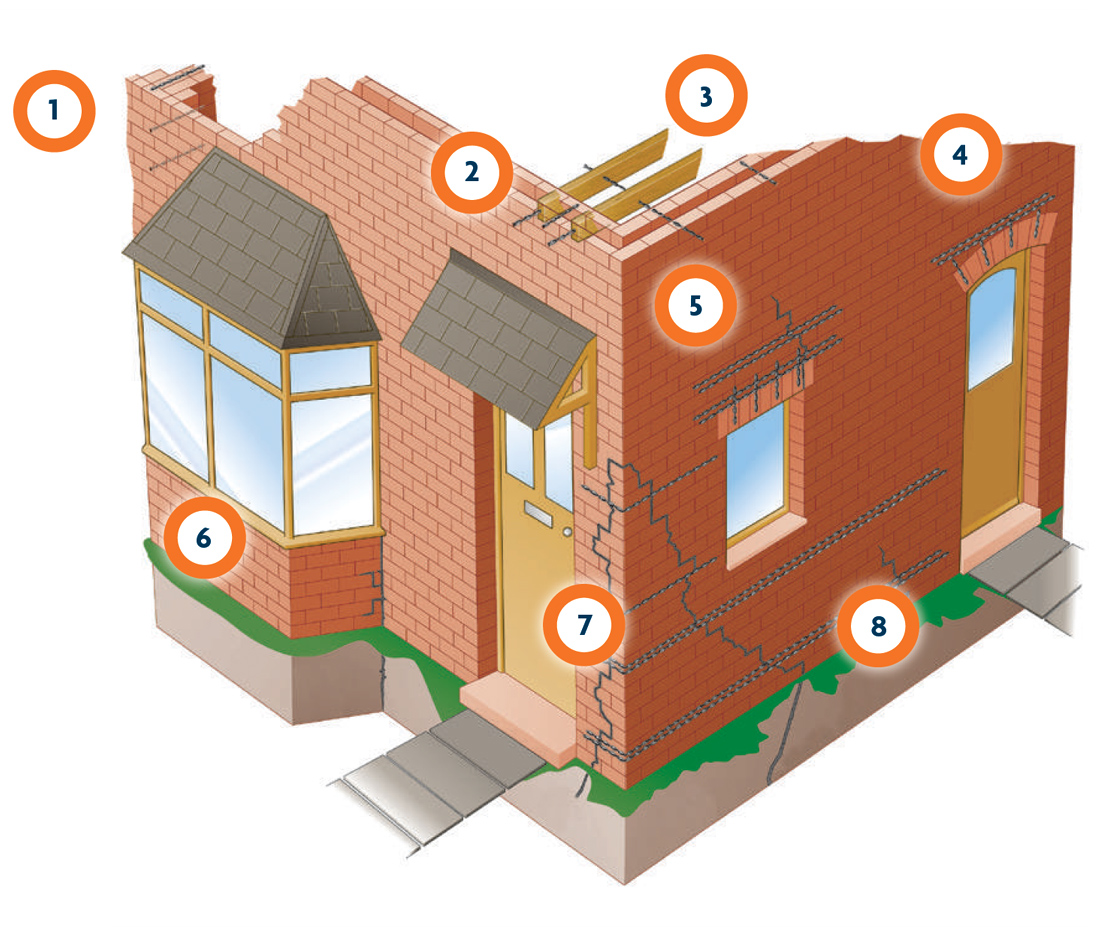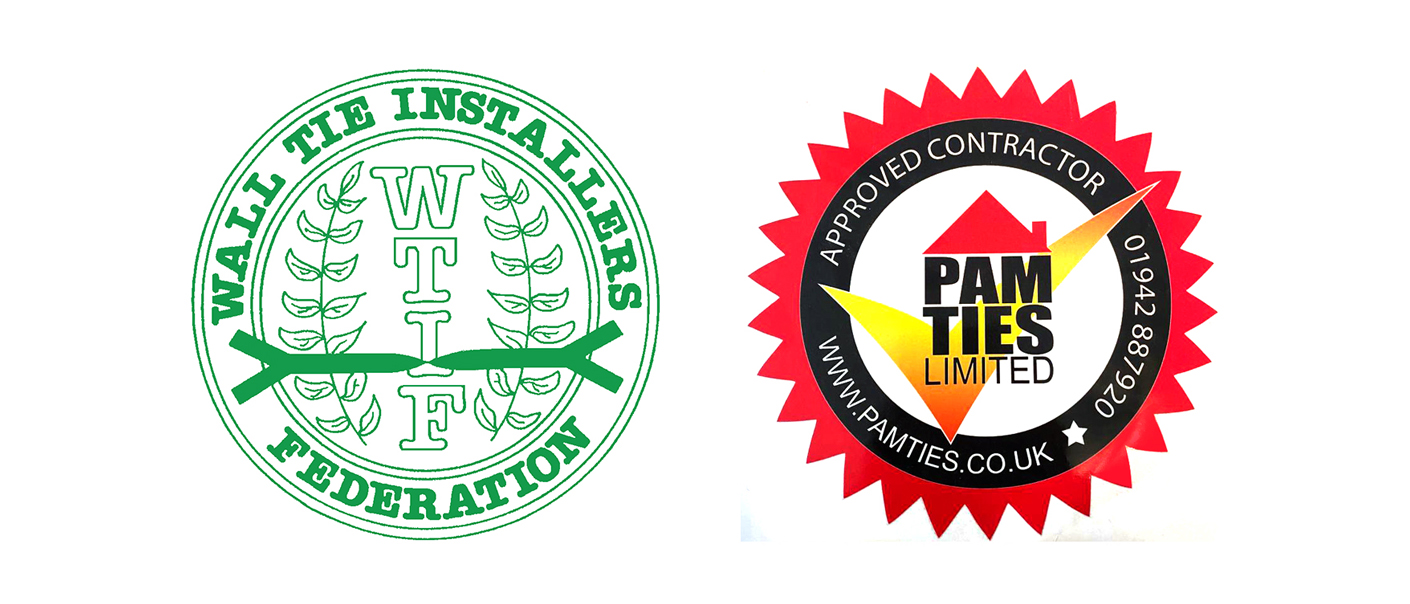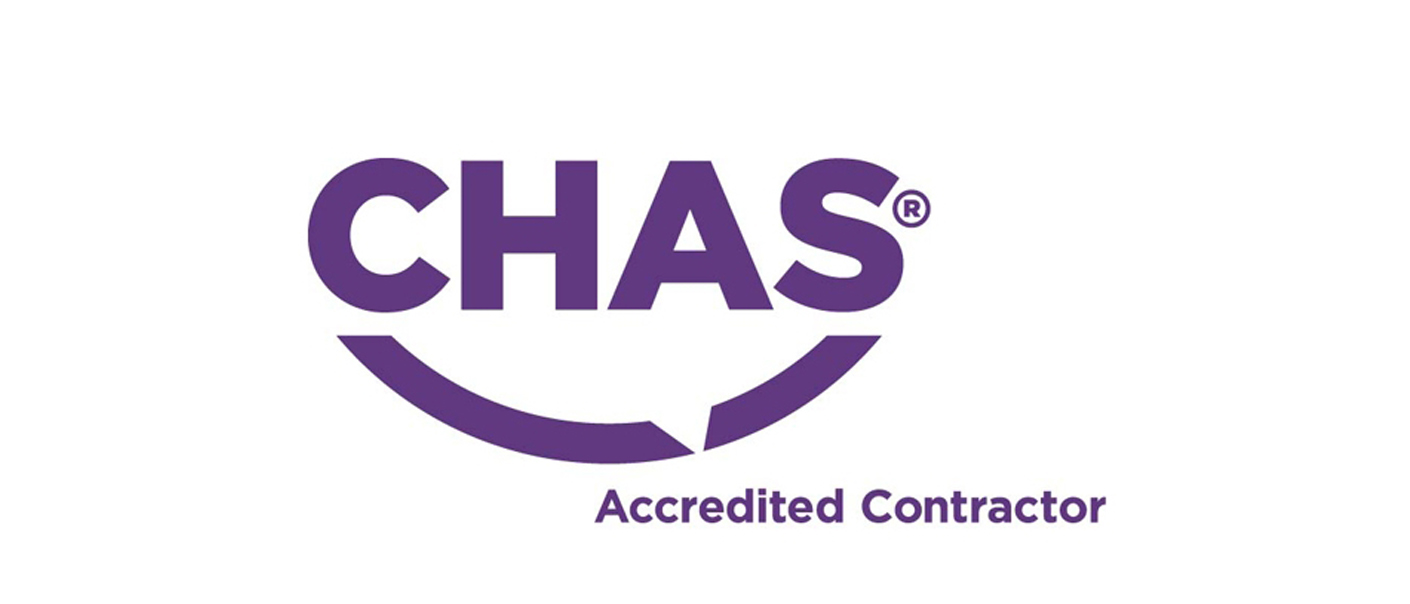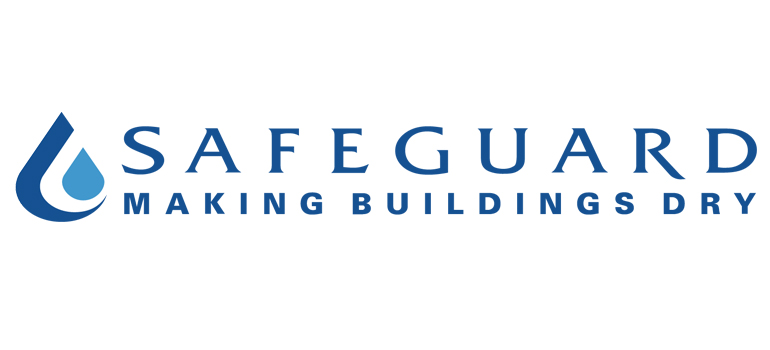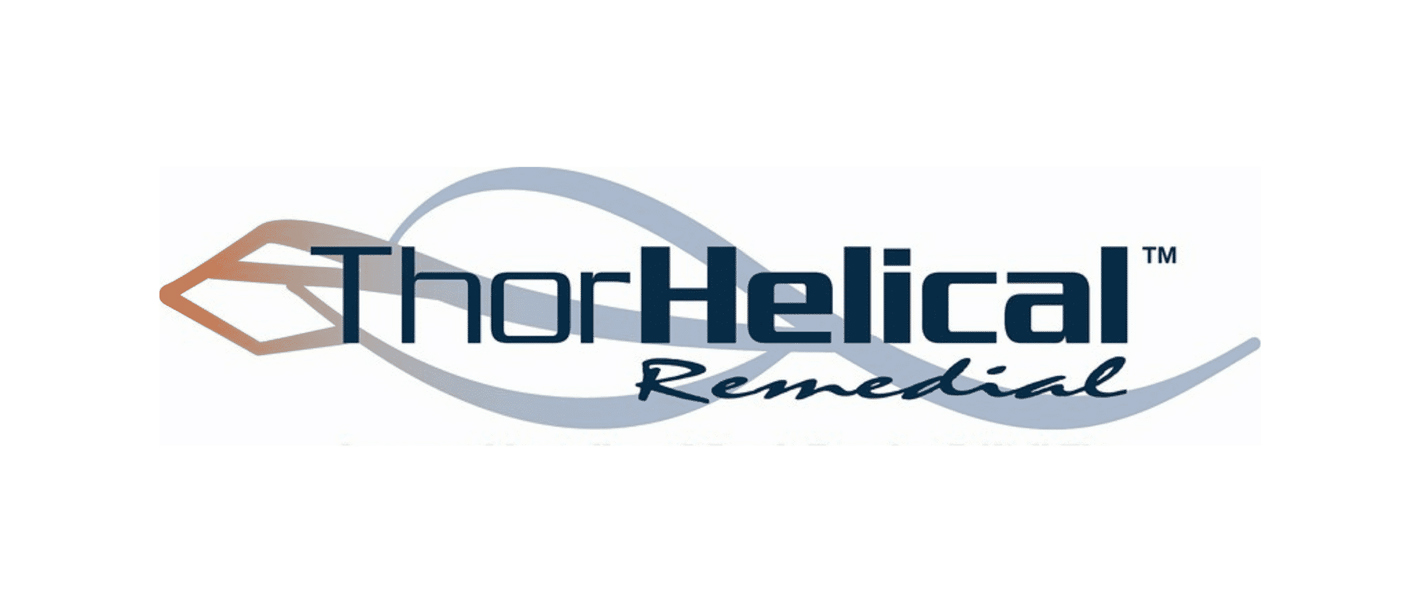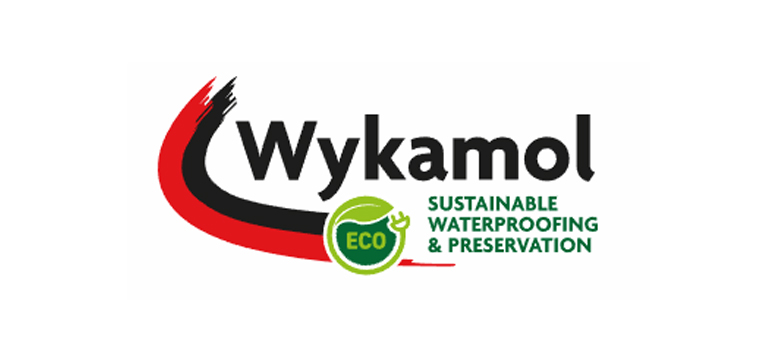Helical Wall Tie Replacement & Structural Restraints
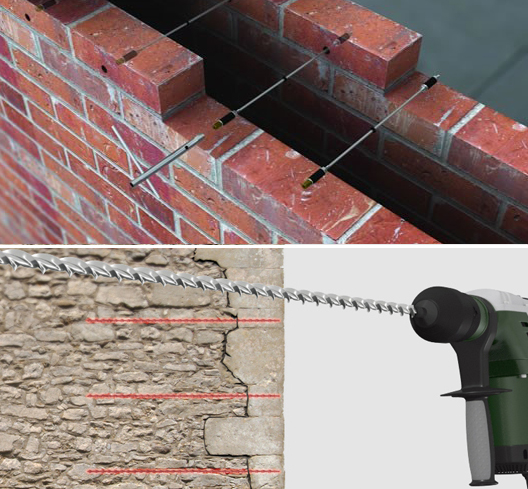
Remedial Wall Ties & Restraints
Remedial wall ties are most often used for reconnecting the inner and outer walls of an existing cavity-wall structure. Wall tie replacement is often required when the original tying system loses strength as a result of corrosion. Sometimes replacement wall ties may need to be installed if the built-in ties have been incorrectly fitted; for example if not enough ties have been used, they are not embedded to the correct depth or the type of tie used is inappropriate for the building.
When replacing cavity ties with a remedial tying system it is important to bear in mind that the replacement wall ties should perform the same functions as those required from ties used in the buildings construction. They should:
- Secure the inner and outer walls of a cavity wall structure
- Transmit tension and compression forces without excessive deformation
- Permit differential movement in both the vertical and horizontal planes without losening
- Maintain these functions in the event of fire
In addition remedial wall ties should have the means to prevent the passage of water across the cavity.
Dry Fixed Remedial Wall Ties
Drive-in helical wall ties having diametrically opposed work-hardened blades that corkscrew into pilot holes formed in brick, block, stone and concrete when driven with a lightweight impact drive adapter.
Chemically Fixed Ties
Helical wall ties with a continuous deep-trough helix that provides a great keying surface to enhance bonding when secured with resin, grout or mortar. The use of remedial wall ties is not restricted to strengthening cavity walls. They offer a quick and easy solution to the problem of strengthening masonry arches, bridges and parapet walls.
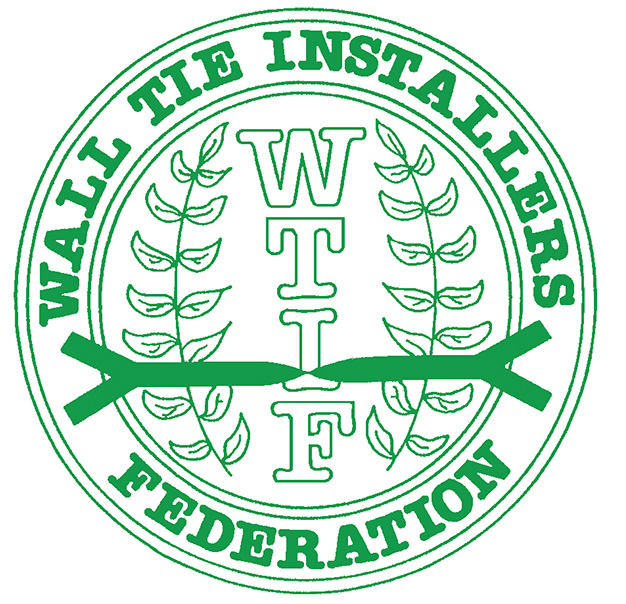
Proud members of the Wall Tie Installers Federation
The Federation is nationally recognised as the accepted reference point for professional bodies along with private individuals seeking information or guidance on these subjects. The Wall Tie Installers Federation was formed in 1989 to ensure members work to a strict code of practice and the BRE standards.
25 Year Insurance Backed Gaurantee
The Wall Tie Installers Federation can help
If you need an inspection, we can help you select one of our Registered Installers to inspect your property and, if required, carry out the necessary wall tie remedial work. Our Installers are experienced in both the diagnosis and remedial treatment of wall ties along with any ancillary work that is required. Once the wall-tie work has been completed, an insured 25 year Warranty can be applied for from the Federation. Ask our Registered Installer about the warranty when the property is being inspected.
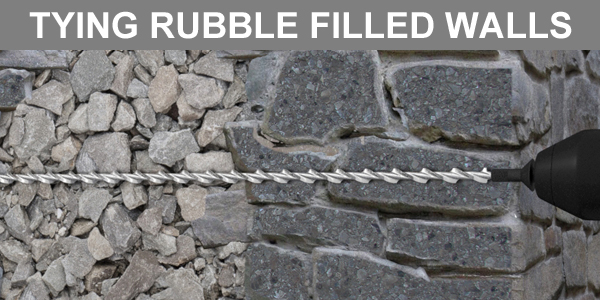
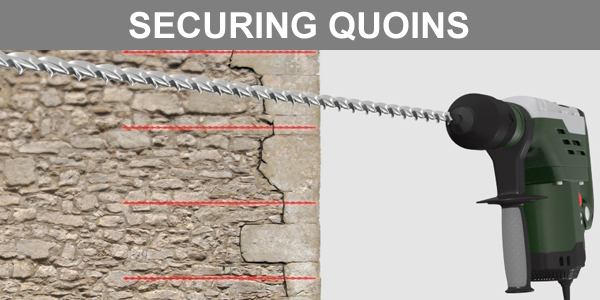
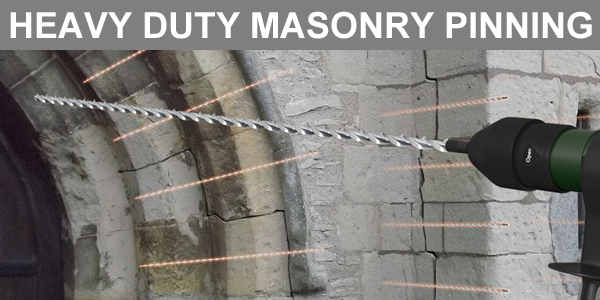
Replacing Cavity Wall Ties
Replacing cavity wall ties with a remedial tying system is a low-cost alternative to rebuilding walls suffering from wall tie corrosion. For 30 years, wall tie replacement has become the accepted method of solving and remedying cavity tie failure problems.
Wall tie failure generally occurs in one of two ways. There is either a lack of sufficient ties during construction or their deterioration due to rust. In the case of wall tie corrosion, the rusting steel builds iron oxide layers that expand. The degree of damage from expanding steel ties depends on the wall tie type used in construction.
- Ties produced from steel wire may erode and ultimately disintegrate. The result is a façade wall that is free-standing and vulnerable to wind loads.
- Ties manufactured from steel-strip tend to force the brickwork apart as they expand. The expansion force is irresistible and jacks the brickwork apart, causing cracks at tie positions. As more ties rust, a series of horizontal cracks can develop along the mortar bed joints that house the cavity ties. Such horizontal cracking significantly damages and weakens the structural integrity of the façade at a time when the eroding ties are less able to support it.
In either case, replacing cavity wall ties with a corrosion-resistant wall tie replacement system provides a robust and lasting remedial solution. Thor Helical manufactures a range of retrofit ties, these include:
Mechanical Helical Wall Ties
Thor helical’s one-piece stainless steel helical wall ties are 9mm in diameter. When the CD Ties are hammer-driven into small pilot holes, they corkscrew into brick, block and concrete, delivering a mechanical fix that grips the wall on each side of the cavity. Unlike ties having expanding mechanisms, which produce point-loadings when tightened, the twin-thread connection of the helical wall tie exerts no expansive stress into the brickwork and will not loosen with vibration.
Resin Fix Ties
Where the condition of masonry is poor, a resin-fix brick tie may offer a suitable fixing solution for replacing cavity wall ties. They are chemically bonded into small holes to connect or reconnect the walls on either side of the cavity. Resin fix ties are not appropriate where fire performance ratings exceed 30 minutes.
Resin/Mechanical Tie
Thor Helical timber frame ties are usually for use in new construction. However, they are also useful for replacing cavity wall ties in existing timber-framed houses up to 4 stories high. The flexible 5mm ties corkscrew as they are hammered through a 6mm clearance hole in the outer façade and onward into the wooden studs of the timber frame. The connection to the masonry wall requires a chemical bonding agent.
How It Works
Here’s a short video explaining the process of Wall Tie Replacement, Helical Ties for Cavity Walls
What makes the Thor Helical CD wall tie a cut above the rest?
- Suitable for use in brick, perforated brick, block, stone and concrete
- Ideal for replacing cavity wall ties in wide cavities of up to 225mm.
- Accommodates thermal, moisture and seismic movements.
- Resistant to fire and the transfer of water.
- Unique precise thread technology for unrivalled consistency and performance.
- Patented replacement wall tie system with a unique drive-shank
- Safe, easy to use and low cost SDS setting tool.
- CD ties conform to BS EN 845-1 in a broad range of substrates when tested to BS EN 845-6: 2012.
- Thor Helical CD wall ties meet the requirements for a Type 2 tie for cavity widths of up to 150mm (brick, block, perforated brick and concrete) and for a Type 3 for cavities of up to 225m wide (autoclaved aerated concrete).
Pinning Masonry Arches
Pinning masonry arches with helical reinforcement rods is a highly effective way of repairing and strengthening old brick or stone arched structures. Installation of the heavy-duty helical ties maintains arching-action, restrains thrust and prevents failing arches from collapsing. A masonry arch transfers vertical loadings via its base to abutments that restrain the resulting thrust, help maintain arching action and prevent the arch from collapsing. Old arches may fail due to tension developing in the arch, causing separation of arch layers or movement of the keystones. Early signs of failure become apparent when an arch sags or cracks. This cracking and displacement failure is potentially dangerous and may lead to instability. The introduction of external bracing can provide additional resistance. If tension develops in the masonry, adding reinforcing ties increase resistance to tension forces and reconnect separated arch-layers or keystones. Pinning masonry arches to the brickwork or stonework above can increase the arch’s effective depth and load capacity.
Chemical Fix Grout Tie for strengthening brick & stone arches
Helical bars, fully grouted into deep bores drilled into the masonry, can restore the strength of brick arches. Holes are typically 14-18mm in diameter. The process involves injecting a cement-based grout into the holes and inserting a helical tie bar into the unset grout. The continuous deep trough of the helix provides an excellent key for locking the tie bar in place once the grout cures and sets.
Mechanical Fix Strap Tie for pinning masonry arches
Where material compatibility, temperature extremes, speed and cleanliness is an issue, one should consider reinforcing masonry arches with a heavy-duty self-tapping helical tie rod driven deep into the masonry. A small pilot hole, typically 8mm in diameter, is drilled into the masonry, and a 12mm heavy duty tie rod is hammer-driven into the pilot hole. The helical strapping ties corkscrew into brick and stone, cutting twin-start self-tapping threads to provide a high strength mechanical connection.
What makes the Thor Helical 12mm tie a cut above the rest?
- Ties require no bonding agents.
- Suitable for use in situations where cement grouts cause material compatibility issues
- Suitable for use in freezing temperatures
- Suitable for pinning masonry arches at high speed, typical installation rates are 10 times faster than chemical fix tie bars.
- Small entry hole for minimal disfigurement of masonry
- Patented precise pitch engineering delivers product consistency with unrivalled performance.
- Patented pinning system with unique tie-driving shank
- Safe, reliable, easy-to-use, and low-cost SDS setting tool (patented).
- Ties conform to conditions for CE marking according to BS EN 845-1 2013, meeting the performance requirements for a tensile load capacity of at least 8kN.
Heavy Duty Masonry Pinning
Heavy-duty masonry pinning is now quick and easy with the Thor Helical long-series 12mm CD Wall Tie. The self-tapping, mechanical fix tie straps the perimeter wall of a building to walls running perpendicular to it, adding strength and lateral restraint at masonry abutments. It is common for the facade wall of a building to bow or buckle and to pull away at the corner of cracked or poorly bonded partition walls. Historically repairs have been made using right-angled batt-straps to reconnect brickwork at the weakened wall junctions. These strapping repairs, although successful, are often impractical and intrusive and result in costly repair works to replace plaster and wall decorations. In more recent times, adopting new techniques that use long cement-bonded reinforcement bars from the outside of a building to reinforce wall junctions eliminates the need for disruptive internal work and the associated re-decoration. However, pumping cement into boreholes is messy and slow. Additionally, cement-based products are unusable in extreme temperatures and incompatible with structures built with lime mortars.
The Thor Helical 12mm CD Tie overcomes these problems, fixing outer facades to party walls or perpendicular partitions without bonding agents. The twin-start drive-in helical wall ties have work-hardened blades that corkscrew into small pilot holes formed in the brick, block or stone when driven with an SDS hammer-drill and purpose-made drive adaptor. The tie grips the brickwork along the entire length of the helix to provide a mechanically fixed tension strap that reconnects and strengthens the masonry junction/ abutment.
What makes the Thor Helical 12mm strapping tie a cut above the rest?
- Suitable for heavy-duty masonry pinning with no internal disruption
- No requirement for bonding agents.
- Suitable for use in situations where cement grouts cause material compatibility issues
- Suitable for use in extreme temperatures temperatures
- The high-speed installation is typically 10 x faster than for cement-bonded reinforcement bars.
- Small 8mm entry hole for minimal disfiguration of masonry (10mm for engineering brick and the like)
- Patented precise pitch engineering delivers a two-start helix with unrivalled consistency and performance.
- Patented pinning system with unique tie-driving shank
- Patented SDS recessed setting tool is safe, reliable, easy to use and low cost
- CE marking according to BS EN 845-1 2013 and National Annex NA when used as a ‘Driven Strapping Tie.’
- Mean tensile load greater than 8kN at 215mm embedment.
Fixing Bulging Walls To Floor Joists
Lateral restraint ties are used for fixing bulging walls to floor joists. Bowing or leaning brickwork is locked in place by securing it into a stable flooring structure. A series of load-sharing tie bars are installed along the length of the wall to prevent further movement of the masonry. Bowing or the bulging outwards of old brick or stone walls is often due to the fact that walls were inadequately tied into the floor or roof structure during construction. When the wall then becomes overloaded, for example when supporting heavier roof tiles, the wall develops a tendency to buckle at mid-height or where window openings create a natural weak spot. Bulges in walls having lime mortars may develop so slowly that movement occurs without any visual sign of cracking; it may therefore go unnoticed for a long time. Traditional methods of restraining bowing walls include the provision tie bars and pattress-plates or the introduction of retrofit batt straps; both involve substantial upheaval. Thor Helical has developed two discrete and unobtrusive systems for fixing bulging walls to floor joists. The choice of system depends on whether the joists run parallel to the wall or perpendicular to it.
Joists running parallel to bulging walls
A screw-in helical lateral restraint tie is used for stabilising buckled walls by securing them to at least two joists. A clearance hole is drilled through the wall and the self-drilling lateral restraint tie is power-driven through the side of the joists, gripping them with a wood-screw thread. The ties are connected to the brickwork using a chemical bonding agent.
Both methods of fixing bulging walls to floor joists should only be considered if the bulge in the wall does not exceed one third of the thickness of the wall, for example does not exceed 70mm in a solid 225mm wall. If the wall is a cavity wall and the bowing is in the outer leaf only then, in addition to fixing bulging walls to the flooring structure, a retrofit wall tie system should also be considered to fix the outer leaf to the inner structural wall.
Joists running perpendicular to bulging walls
A hammer-in helical restraint tie is used for strapping bowed walls to the joist-ends of internal floor structures. A clearance hole is drilled through the wall and the tie is hammer-driven into the end-grain of the joist. The ties corkscrew in to give an excellent connection to the wooden joist. A resin fix at the masonry end of the tie forms the connection to the brickwork.
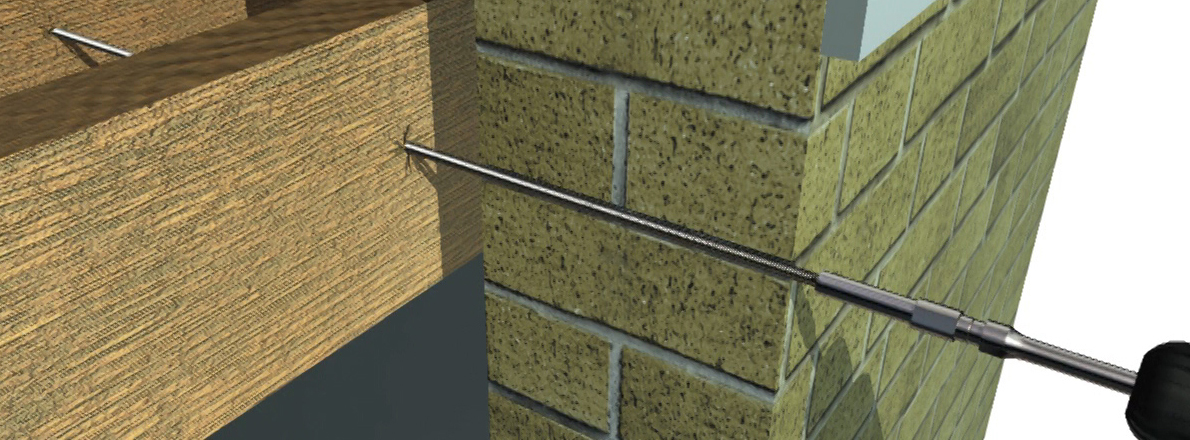
Tying Rubble Filled Walls
Thor Helical ties are beneficial for tying rubble-filled walls. The twisted wall tie bars connect the inner and outer layers of old stone walls when the core is designedly full of rubble or other infills. Old rubble-filled walls sometimes develop defects that appear as bows or bulges in one or both leaves. Common causes of such defects are; rainwater penetration, repetitive cycles of freezing and thawing and settlement of the infill.
The mechanism for this is that the water penetration washes the fine material out of the core infill over the years, allowing the heavier loose infill to drop down the wall. The residue build-up causes areas of localised pressure, resulting in bulging as excess infill forces the walls apart. There are two methods of re-tying rubble-filled walls. The first is method utilises a bonded connection, and the other relies on a mechanical connection to secure the inner and outer layers of stonework.



Tying Rubble Filled Walls with Cement-Bonded Tie Bars
The bonded method requires drilling a large hole from one side of the wall, across the rubble infill and into the remote wall. The walls are thoroughly wetted to limit suction, and polymer-modified cement-based grout is injected via a long nozzle to fill the bore in each stone before winding the bar into the unset grout. Once cured, the bar is bonded to both stone layers creating a tension tie strap that provides resilience against further bulging pressures. Sometimes, there are difficulties installing bonding ties. It is often the case that settlement of the infill blocks insertion of wetting or grout-injection nozzles, the blockages hindering grout-injection in the remote leaf. Other limitations of this method include material incompatibility issues in old buildings and using a cement grout in cold temperatures.
Tying Rubble Filled Walls with Mechanical Fix Ties
The mechanical method of tying thick rubble-filled walls requires a small and discrete pilot hole extending from the near-side wall, across the rubble infill, and into the hidden wall layer. Using an SDS drill’s hammer action with an SDS setting tool, a heavy-duty twin-start helical tie is driven into the walls to provide an undercut connection in each layer.
The corkscrew action of the mechanical helical ties allows it to wind through any loose infill. With no chemicals, this technique of securing old rubble-filled stone walls overcomes using dissimilar materials and eliminates installation limitations in cold climates.
Securing Quoins
Securing quoins and cornerstones to adjacent masonry walls is quick and easy using the Thor Helical concealed strapping tie system. Sturdy 12mm helical ties mechanically fix a building’s cornerstones and brick quoin corners, locking the quoins in place and adding strength to external intersections. Quoin stones traditionally make up the external corners of large houses and public buildings. They are constructed in some cases to provide additional strength for a wall built with inferior material. In other cases, they make an architectural feature of a corner, creating an impression of durability and strength. Brick quoins typically appear on brick buildings in such a way as to give the appearance of prominent masonry blocks, whilst one can equally find stone quoins on both stone and brick buildings.
The layout of quoins creates a series of long vertical joints adjacent to the masonry of the adjoining walls, which facilitates differential movement. Thor Helical’s development of an effective and concealed method of securing unbonded quoins prevents the stones from becoming unstable, rotating or separating from the main walls. Cornerstones can be fixed to adjacent masonry walls using a heavy-duty self-tapping helical tie rod driven through the quoin and deep into the masonry. 12mm heavy-duty tie rods are hammer-driven into the masonry via a small pilot hole. Due to the shape of the oversized helix, the two-start helical tie corkscrews into the masonry to provide a concealed mechanical interlock connection, securing the quoins in place and preventing rotation or separation.
What makes the Thor Helical 12mm tie a cut above the rest?
- Suitable for securing quoins at high speed
- Grout-free connection alleviates material compatibility issues and permits use in freezing temperatures.
- Small entry hole for concealing the repair
- Patented precise pitch engineering delivers a two-start helix with unrivalled pitch consistency and holding performance.
- Patented pinning system with unique tie-driving shank
- Safe, reliable, easy to use and low-cost SDS setting tool (patented)
- Thor Helical 12mm mechanical CD ties conform to conditions for CE marking according to BS EN 845-1 2013 and meeting the performance requirements for tensile load capacity of at least 8kN

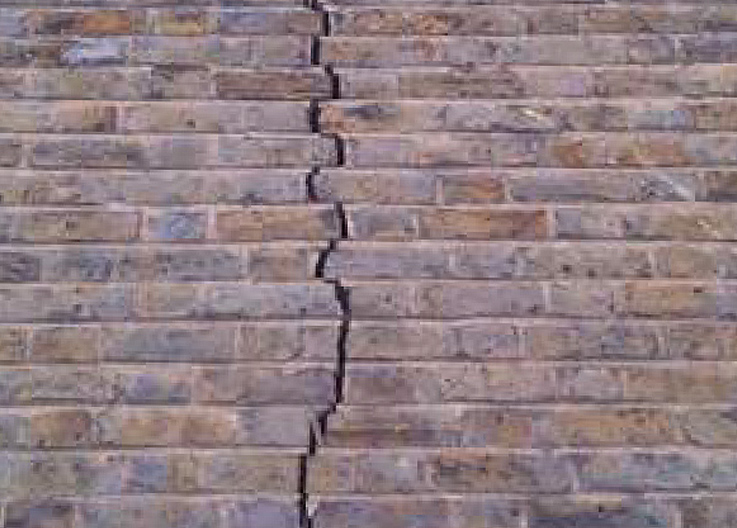
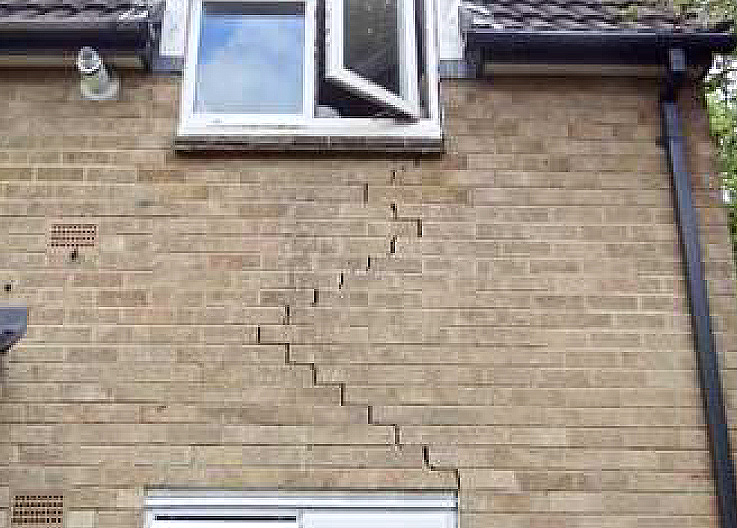
Let’s Talk
Contact the Team at EBM
Contact us here for some friendly advice on how we can help you and your property

Fast and efficient service

Professional Workmanship

Industry Experts

Over 30 Years Experience

I had EBM carry out a lintel replacement and damp proofing. They were brilliant from start to finish. They were clear in their quotation, kept me informed on a start date, turned up on time and got the job done on schedule and took every care in keeping my house clean. I'd highly recommend EBM
Kevin Burke
I had EBM carry out a lintel replacement and damp proofing. They were brilliant from start to finish. They were clear in their quotation, kept me informed on a start date, turned up on time and got the job done on schedule and took every care in keeping my house clean. I'd highly recommend EBM
kevin_burke_98
Work is near completion. Chris and the guys have been brilliant - very considerate and hard-working. The job has taken a while due to the consistent rain we have had the last couple of months but Chris has kept in constant communication to update me on when work can continue. Highly recommend.
christine44085
Couldn't be happier with the work the team have done. So professional, friendly and have been amazingly flexible throughout the whole process despite a pandemic. Open, honest and always cleaned up. Would recommend anytime and will certainly be calling Chris again for future work
mrs23060
Send us a quick message today!
We’re always happy to help and advise, or offer some friendly advice


